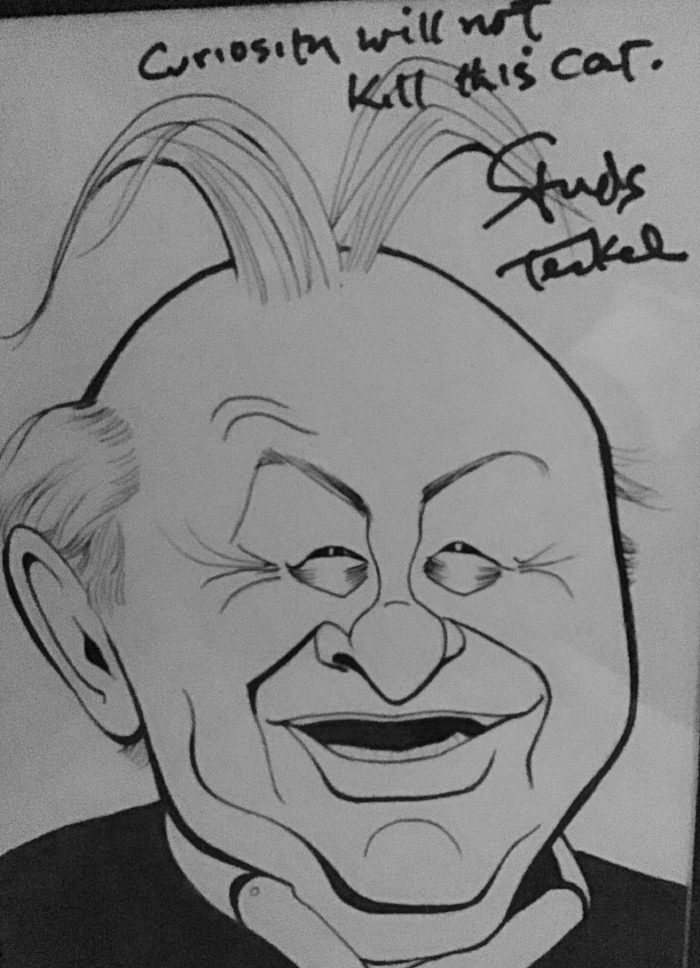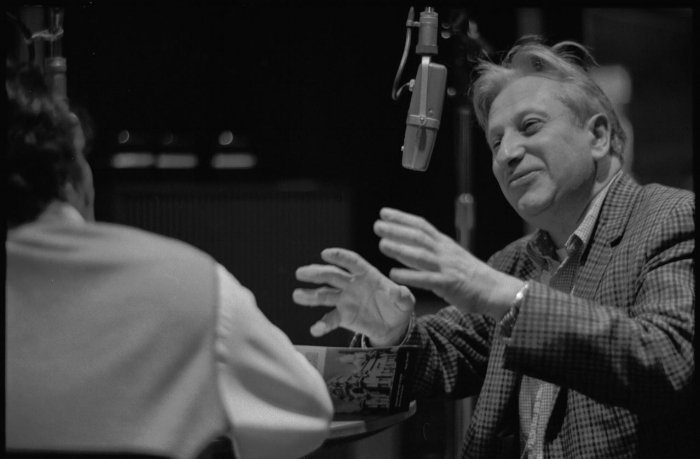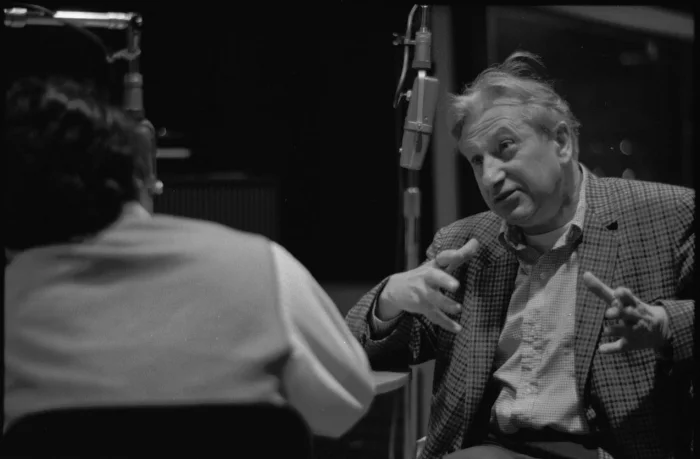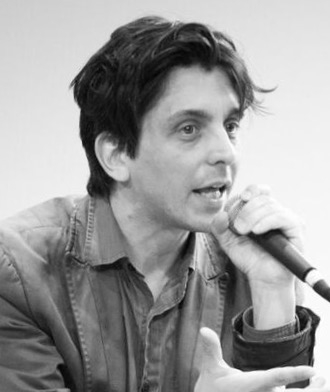TONY MACALUSO - THE STUDS TERKEL RADIO ARCHIVE
Remember May 16, 2018. That will be the day that fans of the spoken word have two things to celebrate. The first is to honor what would have been Studs Terkel’s 106th birthday. The second is the public launch of a new online project that has been years in the making – The Studs Terkel Radio Archive. There is a preview of things to come in our CONVERSATION with WFMT Radio Network Director Tony Macaluso which includes clips from a 1960 interview between Studs and silent film legend Buster Keaton.
The Keaton interview is just one of 5,600 radio programs from Terkel’s 45 years on the air from 1952 to his retirement in 1997. Following his passing on October 31, 2008, the archive moved from WFMT to the Chicago History Museum where it has been carefully curated for scholars.
The new project developed in recent years is the result of a unique partnership between the Chicago History Museum and WFMT Radio Network, with major support from the Library of Congress, the National Endowment for the Humanities, and individual sponsors and donors. The state-of-the-art website will launch on May 16th and unveil the first phase of the digitized archive with audio-to-text features, a dynamic search function of over 60 topic categories and much more.
Tony Macaluso, who also serves as Director of the Studs Terkel Radio Archive, joined the conversation to talk about the launch and the work that has been done to make this extraordinary body of work available for future generations of scholars, journalists, and the general public.
PODCAST
One of a kind archive … "I remember spending a month or two just talking and looking around … we found some parallels. … There was nothing quite like Studs … one person over almost half a century talking about so many different kinds of topics ... literature … politics … science … education policy ... and traveling around with a portable tape recorder. … so we realized at a certain point there wasn't going to be a model out there … then started asking 'Why is this so unique?' … Even early on in his career, Studs would go back and use a little bit of audio from an earlier program to start a new program and recognized that there was something going on here. And so fortunately for a daily radio station – that would usually not even bother to record or certainly not to save these kinds of programs – they started to be saved and taken care of."
Wide-ranging dialogue … "Studs prepared meticulously. If he was interviewing a writer, he would read the book, make incredible notes or research the person. The conversations themselves are so often so unpredictable and flow in different directions ... there is a kind of stream of consciousness and free association of thoughts and ideas … He might be talking to a blues musician and the next thing you know they might be talking about some aspect of agriculture economics or mythology from Yoruba region in Africa finding its way into the conversation. So there is something of a challenge just from a listening standpoint to slow down and get out of a multi-tasking 21st-century mindset and in some ways tune into a different era in history when ideas flowed differently … when there was a kind of a theatricality and a performance to conversations … an art of conversation that maybe has changed."
Boundless curiosity … "his self-chosen epitaph was “Curiosity did not kill this cat!” … We all want to be curious, but, what is real boundless curiosity actually? How does it function … and what does it mean to continue to follow threads? ... I hope that the archive can serve as kind of touchstone for both, for people to be able to take audio and reuse it. … when he talked with Buster Keaton, he discovered things - got Keaton to articulate things – that maybe he had never said in another interview … some of that was not just that Studs was being a journalist or a disc jockey, whatever he calls himself … he watched those movies when he was younger, probably, and then later when they came back in revivals, he desperately wanted to know more about how they were made. 'How did you do the subtitles?' 'And the lips?' 'How did you plan the plots of those films?' When it comes from genuine curiosity, then real discoveries can happen."
PODCAST
WEBSITE
1960 BUSTER KEATON INTERVIEW
EXPLORE THE ARCHIVE
Edited for length and clarity.
TERKEL PHOTOS| Chicago History Museum Raeburn Flerlage, photographer
CARICATURE|Jan Folkman Hefter-Petterino's Collection|LEYE
CONVERSATIONS with Ed Tracy
Season 3|Episode 6 - May 7, 2018
PODCAST available on iTunes, Libsyn and Stitcher
ARCHIVE DE USURIS BLOG EMAIL WEBSITE SUBSCRIBE






